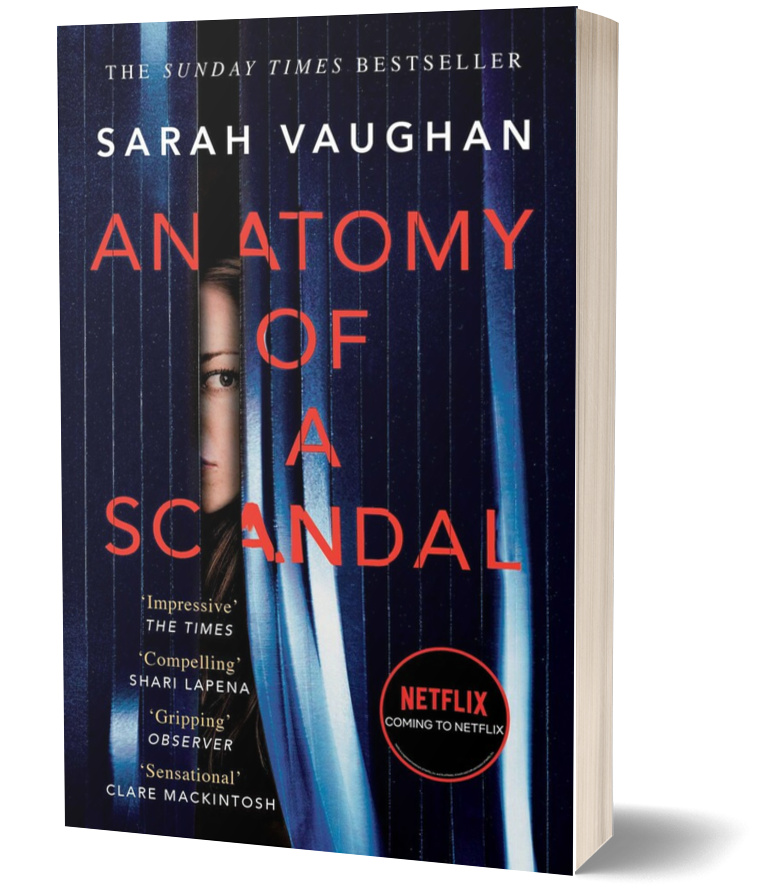Anatomy of a Scandal
Book Club Questions
Several readers have been kind enough to suggest that Anatomy of a Scandal would make a great reading group novel - particularly as the issue of consent, and of entitled men abusing power, makes it so timely. S&S US have compiled these questions which I've expanded by including some suggested by Katherine Sunderland, @KatherineSunde3, here, on her BibliomaniacUK blog.
Please note that there are SPOILERS in these questions - so please don't look if you haven't yet read!
1. The characters in this novel are from privileged backgrounds: James and Tom went to Eton; Sophie met James at Oxford. Did this make it harder to sympathise with them - or was this irrelevant?
2. Anatomy of a Scandal was completed a year before the Weinstein allegations broke, and the subsequent slew of sexual misconduct revelations in Hollywood, the media, and - in the UK - Westminster. What is it about some powerful men that makes them dangerous? Why does James Whitehouse act as he does?
3. One of the themes of Anatomy of a Scandal is what is seen versus what is hidden or secret. From the simplest element of Kate putting on her robe and wig versus wearing her “civilian” clothes, to the upright, clean-cut facade of James’s public persona versus his carefully concealed past, the major characters in the novel have secret sides of themselves. In what other ways does the novel emphasise the dual natures of characters and situations?
4. While at Oxford University, the characters live with many traditions and within ancient buildings full of history. How is the past interwoven into the characters’ lives? How do the settings add to the atmosphere and reflect the themes of the novel?
5. Why did I chose English as the subject studied by Sophie and Holly? (Apart from studying it myself!) How is this subject used by these characters?
6. On page 112 (US), Sophie thinks to herself, “she imagined a veneer of serenity encasing her, a hard impenetrable polish.” What does this tell you about Sophie as a character? When and how do you see this hard shell protecting her during the novel? Do you think it also harms her?
7. When Kate sees Olivia testifying for the first time, she thinks, “She is about to reveal herself as emphatically as if she were cut to the bone” (p. 123, US). How does the trial reveal character traits? What traits are implied through the characters’ testimonies and actions in court rather than more explicit narration?
8. Each woman in the novel is confronted with a series of choices. Which choices do the women feel they must make? Do you think they had other options than the ones they went with?
9. When Sophie confronts James after the court has found him not guilty of raping Olivia, he responds, “I told the truth, near enough. Or the truth as I saw it. . . . We all adjust the truth from time to time” (p. 312). As a group, discuss the small and large ways in which the various characters adjust the truth throughout the novel.
10. What was the impact on you as readers of realizing Kate wasn’t a reliable narrator? Did it lessen your sympathy toward her?
11. Were you surprised by Sophie’s reaction to James’s admission of perjury (even if he wouldn’t define it as such)?
12. After finishing the book, read the epigraph from Hilary Mantel’s historical novel Bring Up the Bodies. Her book delves into the heart of Tudor history, exploring the dramatic trial of Anne Boleyn and her lovers for adultery and treason. The quote itself comes from Thomas Cromwell; many of the men he has accused of adultery are his political enemies. By citing a moment from history, what themes does this epigraph emphasise in the book?
